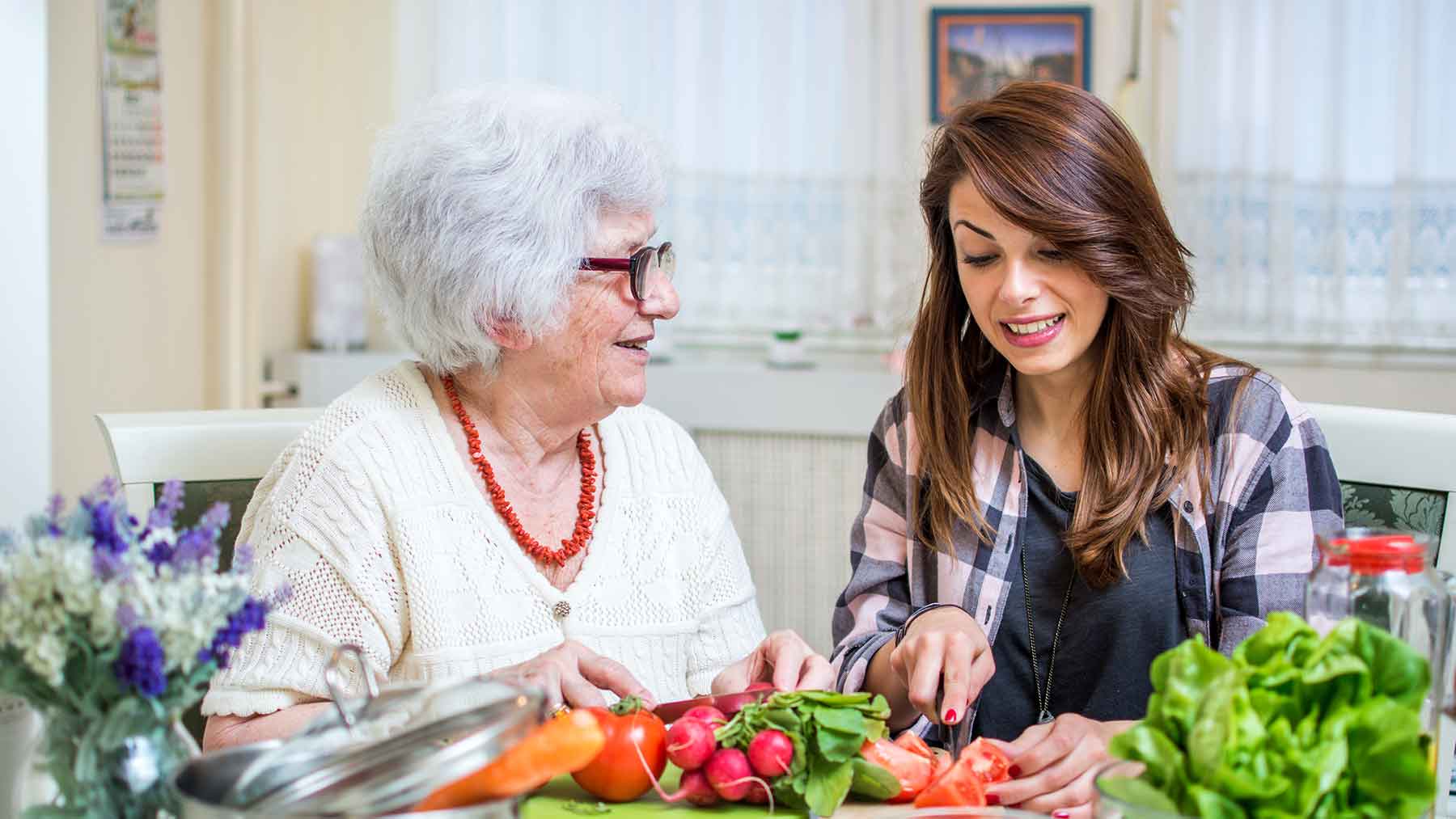How to ease holiday meal prep

For some people, preparing for the holidays means spending more time than usual in the kitchen. And while cooking big meals or baking desserts can be enjoyable, these activities can also be tiring – and sometimes even painful – for anyone living with arthritis or other chronic health issues.
As an occupational therapist at Ohio State Wexner Medical Center’s Dodd Inpatient Rehabilitation Hospital, I often share these holiday meal prep tips with patients recovering from strokes, traumatic brain injuries or other serious health issues. Not only can this advice help manage any aches and pains, but also ward off fatigue when making a fabulous holiday feast.
Plan, Prioritize and Pace
Plan any tasks around your energy or symptom levels. Complete tasks when you have the most energy and the least pain. This may be when you first wake up in the morning, or after taking a nap in the afternoon. Always consider ways to manage any chronic symptoms, such as taking an over-the-counter pain medication, before beginning the task.
Prioritize what’s important. Decide what part of the holiday meal prep should be done now, and what can wait for later. Can some of these tasks, such as shopping or preparing part of the meal be done days or weeks ahead of time?
Pace yourself. Listen to your body so that you can conserve your energy, protect your joints and prevent muscle strain. Take frequent breaks if you’re tired. Instead of standing at a kitchen counter to chop vegetables or mix ingredients, sit at a table to complete the task.
Shopping wisely
Before heading to the grocery store, make your shopping list aisle-by-aisle so that you won’t need to backtrack for items. Try to shop at less busy times.
Make multiple shorter shopping trips over an extended period, instead of one major shopping trip that will likely wear you out. Or avoid going into the grocery store altogether by shopping online and using curbside pick-up service.
Buy semi-made or prepared foods, such as frozen casseroles or breads, hot and cold foods found in the deli, pre-cut vegetables and bagged salad. Buy smaller or lighter containers – such as a half-gallon of milk instead of a gallon of milk – that are easier to pick up.
Preparing properly
Before the day of the meal, create a “staging area” for the ingredients you’ll need to make the meal. By gathering everything you need in one place, it’s easier to see what you may be missing.
Keep frequently used items in a centralized place in the kitchen. Consider storing heavier items, such as an electric stand mixer, on your counter for easier access.
Use a small rolling cart to transport items in the kitchen from the refrigerator or pantry to your workspace. Slide items along the counter instead of carrying them while transferring from the refrigerator to the stove or elsewhere.
Prepare and freeze dishes days ahead of the family gathering. Or at least start peeling and chopping vegetables, grinding nuts or anything else that can be done ahead of time to lessen the load the day of the feast.
Try making a more simplified recipe. An online search may reveal recipes with fewer ingredients or may offer shortcuts for existing recipes.
Prepare large dishes -- such as casseroles or stuffing – in multiple pans. Each pan will weigh less and will be easier to lift in and out of the oven and carry to the dinner table.
Other suggestions
If you suffer from joint pain or decreased strength, use cooking utensils with larger handles that are easier to grip and hold. Instead of trying to rip open bags, use scissors. An electric stand mixer and an electric can opener can also help decrease strain on joints.
Ask for help from family and friends who’ll be gathering for the meal. Assign them tasks, such as making some of the side dishes or desserts or helping to prepare the meal.
Consider serving the meal buffet style. Catering, if not the whole meal, then at least the main dishes, is another option to consider.
And, finally, forget about setting a fancy table with the good china and silver. Instead, use disposable aluminum foil pans, paper plates and plastic cups for easier clean up.




